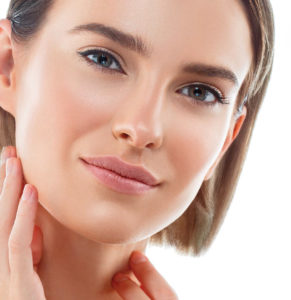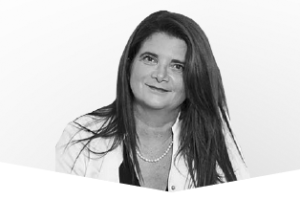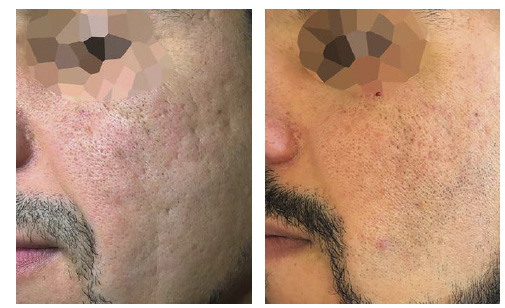Dr Claire Sabatier-Cabrol
Aesthetic medicine is evolving.
In France, where achieving a natural look is the priority, patients do not want any work to be obvious. We no longer talk about “fighting aging” but rather “aging well”. We must help our patients to prevent the signs of aging, guide them over the long term and reassure them that they will not become unrecognisable.
 To do this, every aesthetic doctor has their own combinations which they adapt according to each patient, their requests, their age and their budget. One of the best-suited treatments in the “aging well” arsenal is HIFU, which stands for High Intensity Focused Ultrasounds. These can be used to reshape the oval of the face, which is a frequent demand from patients over 35, a time when sagging in the lower face can become noticeable.
To do this, every aesthetic doctor has their own combinations which they adapt according to each patient, their requests, their age and their budget. One of the best-suited treatments in the “aging well” arsenal is HIFU, which stands for High Intensity Focused Ultrasounds. These can be used to reshape the oval of the face, which is a frequent demand from patients over 35, a time when sagging in the lower face can become noticeable.
Paul Langevin kickstarted the use of ultrasounds for therapeutic purposes in 1918. In the 90s, thanks to their non-invasive nature, HIFU started being used in a number of different branches of medicine: hepatology, gynaecology, neurosurgery and urology.
In 2007, the first article about HIFU in dermatology was published, and in 2009, the technique got FDA approval for lifting the eyebrows. Ultrasounds are sound waves, but should not be confused with electromagnetic waves. These ultrasounds are produced with the help of a ceramic piezoelectric device, whose concavity allows us to focus the ultrasounds at different depths.
Every time the transducer is triggered (or shot), the ceramic moves in a linear fashion and delivers a series of focused ultrasounds at the desired depth. The energy is such that it increases the temperature to around 67-68°. The intensity and brevity of this phenomenon stop the heat from diffusing around the focal point, producing TIZ or a thermal injury zones.
The proteins coagulate and the lesions are irreversible. This brings about tissue and cell repair, as well as repairing the extracellular matrix and its fibres, and producing neocollagenesis. Usually, HIFU devices are equipped with three handpieces for treating the face and neck. The 4.5mm transducers are used to target the SMAS and the hypodermis, the 3mm to treat the deep dermis, and the 1.5mm to treat the superficial dermis. Treating these three layers in this way tightens up the tissues, which gives a lifting effect.
When we treat sagging in the oval and the neck, the patients are generally aged between 35-40 and 65-70. HIFU are also very effective for reducing a double chin. This treatment can be carried out on all skin types and at any time of year. However, it cannot replace surgery and we must pass the baton on to a surgeon if a surgical face lift is required. Providing that we respect the risk areas and handle the transducers correctly, HIFU only cause very mild after-effects.
There is a handful of possible side effects, but they are temporary and always reversible: redness, swelling and bruising. After treatment, the skin may feel a little bruised for a few days or weeks. There is no downtime required. During the treatment, the pain can sometimes be intense, but it can be managed by reducing the power and number of TIZ in each shot. Before the session, it is vital that you take photos head on, from the side and at a three-quarter angle and you record the patient’s weight. It is best to take a painkiller.
The procedure for the oval lasts 30 to 60 minutes and delivers around 300 lines at each depth (4.5, 3 and 1mm). It is an operator-dependent technique that requires training, concentration and patience. Some transducer machines produce several TIZ per shot. The choice of which machine to use should be made according to the manufacturer, opting for a machine that offers regular and high-quality ultrasounds from the transducer’s first to last shot.
Low-cost machines with painful transducers tarnish the image of HIFU on social media. The results are gradual and are visible after 10 to 12 weeks, developing further up until the fifth month. Patients should have a check-up after 18 months to 2 years. As a natural solution with no downtime that can be combined with other techniques, HIFU are extremely effective, which is how they have become a staple for helping patients to age well, leading to high patient satisfaction.
 Dr Claire Sabatier-Cabrol: The “43”, a centre for aesthetic medicine and surgery in Nice. Graduate of Montpellier medical faculty, degree in the Evaluation of Injection and Filler Techniques in Dermatology and Plastic Surgery. Inter-university degree in aesthetic dermatology procedures – the rules of art and vigilance. Active member and co-director of the aesthetic doctor section of the SAMCEP.
Dr Claire Sabatier-Cabrol: The “43”, a centre for aesthetic medicine and surgery in Nice. Graduate of Montpellier medical faculty, degree in the Evaluation of Injection and Filler Techniques in Dermatology and Plastic Surgery. Inter-university degree in aesthetic dermatology procedures – the rules of art and vigilance. Active member and co-director of the aesthetic doctor section of the SAMCEP.












